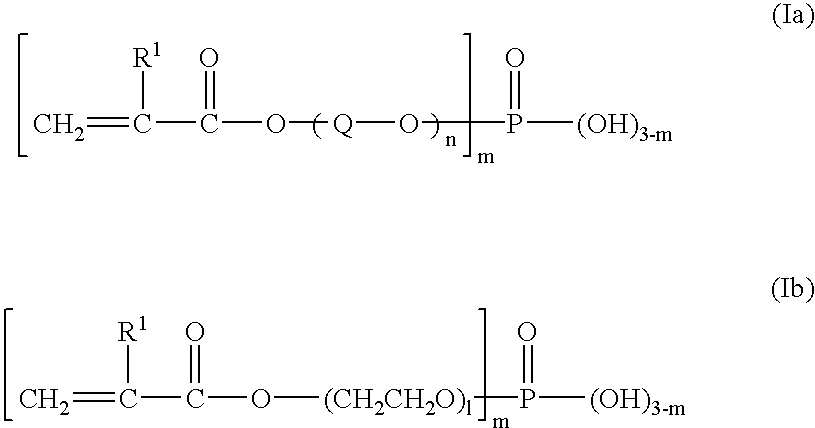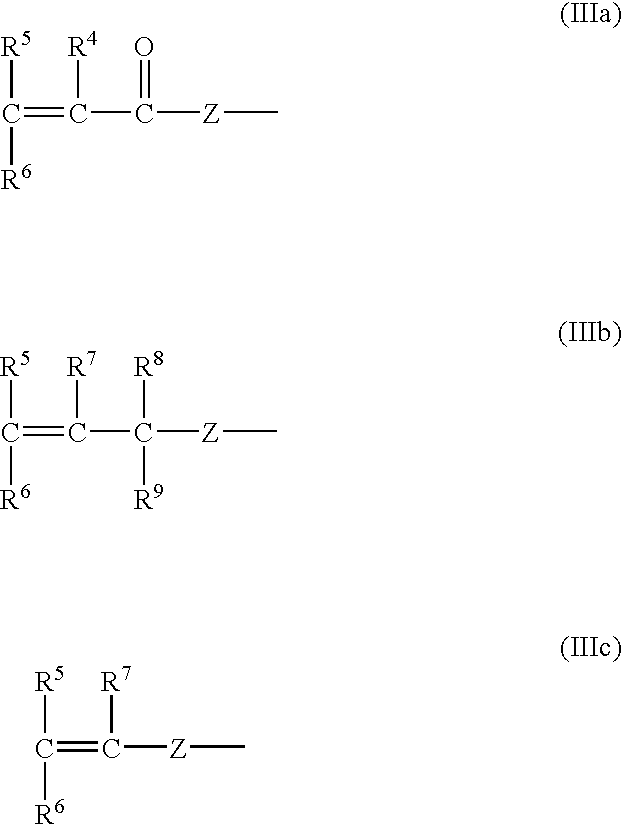Method for treating photosensitive lithographic printing plate
- Summary
- Abstract
- Description
- Claims
- Application Information
AI Technical Summary
Benefits of technology
Problems solved by technology
Method used
Image
Examples
examples
Hereinafter, the present invention is more concretely explained by referring to the following Examples, but should not be limited thereto.
Preparation of High Molecular Binder-1
200 arts by weight of a copolymer of methyl methacrylate / isobutyl methacrylate / isobutyl acrylate / methacrylic acid=35 / 20 / 10 / 35 mol % (charge ratio) having a weight average molecular weight (Mw) of 70,000 (hereinafter referred to as "base resin-1"), 75 parts by weight of an unsaturated compound having the following cycloaliphatic epoxy group, 2.5 parts by weight of p-methoxyphenol, 8 parts by weight of tetrabutylammonium chloride, and 800 parts by weight of propylene glycol monomethyl ether acetate were placed in a reactor, and were reacted at 110.degree. C. for 24 hours in air with stirring to obtain a solution of high molecular binder-1 (acid value=60, an unsaturated group was reacted with 60% of the total methacrylic acid component of base resin-1). ##STR5##
Preparation of High Molecular Binder-2
855 Parts by w...
PUM
 Login to View More
Login to View More Abstract
Description
Claims
Application Information
 Login to View More
Login to View More - R&D
- Intellectual Property
- Life Sciences
- Materials
- Tech Scout
- Unparalleled Data Quality
- Higher Quality Content
- 60% Fewer Hallucinations
Browse by: Latest US Patents, China's latest patents, Technical Efficacy Thesaurus, Application Domain, Technology Topic, Popular Technical Reports.
© 2025 PatSnap. All rights reserved.Legal|Privacy policy|Modern Slavery Act Transparency Statement|Sitemap|About US| Contact US: help@patsnap.com



